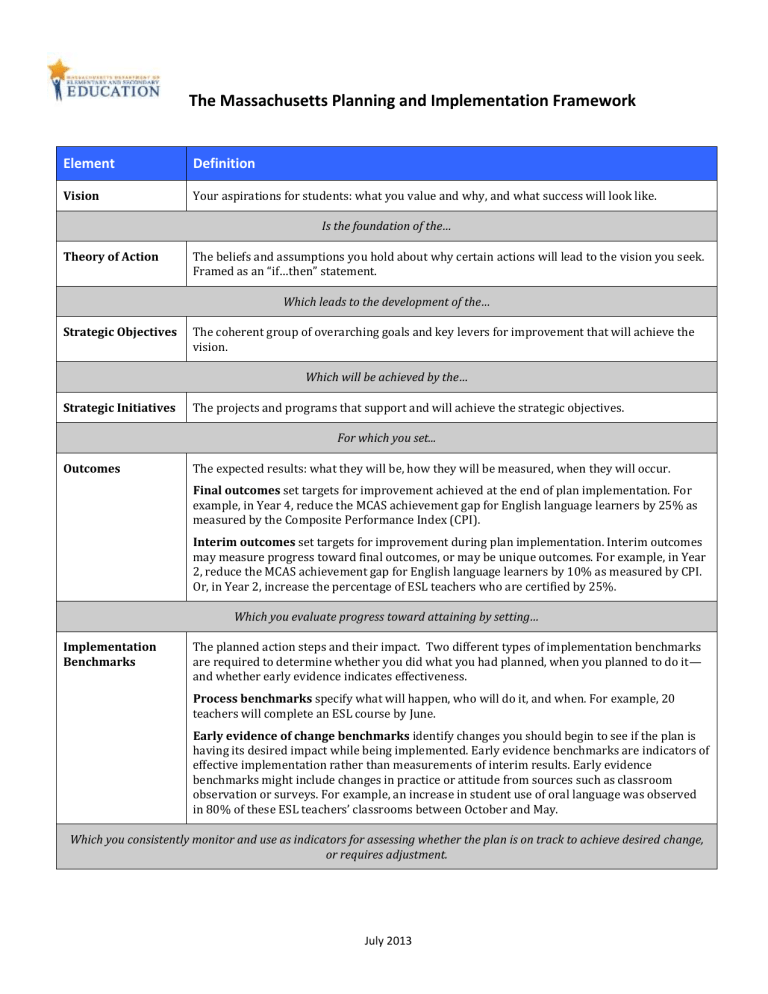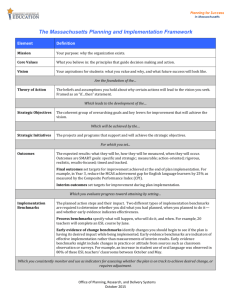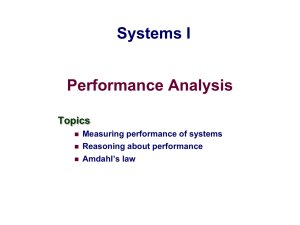213 e

The Massachusetts Planning and Implementation Framework
Element Definition
Vision
Theory of Action
Your aspirations for students: what you value and why, and what success will look like.
Is the foundation of the…
The beliefs and assumptions you hold about why certain actions will lead to the vision you seek.
Framed as an “if…then” statement.
Which leads to the development of the…
Strategic Objectives The coherent group of overarching goals and key levers for improvement that will achieve the vision.
Which will be achieved by the…
Strategic Initiatives The projects and programs that support and will achieve the strategic objectives.
Outcomes
For which you set...
The expected results: what they will be, how they will be measured, when they will occur.
Final outcomes set targets for improvement achieved at the end of plan implementation. For example, in Year 4, reduce the MCAS achievement gap for English language learners by 25% as measured by the Composite Performance Index (CPI).
Interim outcomes set targets for improvement during plan implementation. Interim outcomes may measure progress toward final outcomes, or may be unique outcomes. For example, in Year
2, reduce the MCAS achievement gap for English language learners by 10% as measured by CPI.
Or, in Year 2, increase the percentage of ESL teachers who are certified by 25%.
Which you evaluate progress toward attaining by setting…
Implementation
Benchmarks
The planned action steps and their impact. Two different types of implementation benchmarks are required to determine whether you did what you had planned, when you planned to do it— and whether early evidence indicates effectiveness.
Process benchmarks specify what will happen, who will do it, and when. For example, 20 teachers will complete an ESL course by June.
Early evidence of change benchmarks identify changes you should begin to see if the plan is having its desired impact while being implemented. Early evidence benchmarks are indicators of effective implementation rather than measurements of interim results. Early evidence benchmarks might include changes in practice or attitude from sources such as classroom observation or surveys. For example, an increase in student use of oral language was observed in 80% of these ESL teachers’ classrooms between October and May.
Which you consistently monitor and use as indicators for assessing whether the plan is on track to achieve desired change, or requires adjustment.
July 2013



